Software Review
BusyCal 1.2

Function: iCal Pro.
Developer: BusyMac
Price: $40
Requirements: Mac OS X 10.5. Universal.
Trial: Fully-featured (30 days)
A principled critic must be open-minded and amenable to being persuaded by data. Remembering Oscar Wilde’s admonition that experience is the name we give our mistakes, I often find myself admitting error. When I first saw a digital photo frame, for example, I thought, “What a silly idea.” Then my wife’s niece gave us one for Christmas, and I realized it was revolutionary: other than for the rare frame that itself is a work of art, I now believe there is no reason to own a conventional photo frame. That is the appropriate preface to my assessment of BusyCal. When I read about this software, I wondered why anyone would want to buy a program that appeared to duplicate the functions of the free iCal program, more or less. But then I found myself in a situation where it was important to sync with Google Calendar, and in trying out BusyCal I learned it was superior in virtually every respect.
The developers encourage users to see BusyCal as “iCal Pro.” It’s a good description for what appears to be an elaboration of BusySync, an earlier piece of software from the same company that allowed sharing of calendars over a LAN or syncing with Google Calendar. It has more features, and offers a high level of control over the interface, compared with iCal.
When you run BusyCal, you will find it looks almost exactly like iCal. Only an aficionado would be able to spot the differences. Porting your data to BusyCal requires nothing more than launching it for the first time; additionally, you can revert to iCal without losing anything except the custom features supported by BusyCal.
Then you create a new event and instantly BusyCal shows how its designers have responded to users. You can edit the event immediately, without further keystrokes, in either a floating window or a separate pane below the to-do list on the right. You also can edit more than the title: tabbing runs through the other fields. The fields that are displayed also can be customized. A user who truly couldn’t stand iCal’s setup, which unlike its own earlier version requires a separate command to enter the editing mode, might want to buy BusyCal just for this convenience.
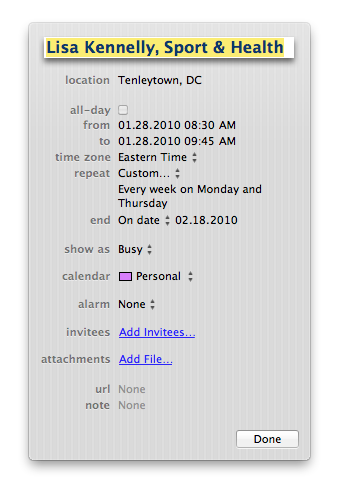
Event in iCal
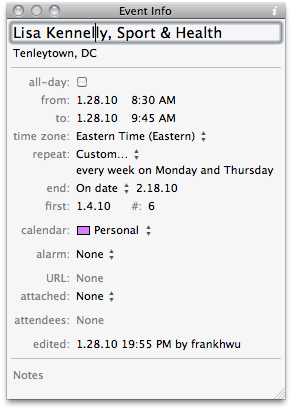
Event in BusyCal
In the latest update, BusyCal also allows the setting of a different default font. Earlier versions already allowed customization of fonts, but the new universal font setting is terrific. It’s another single feature that might persuade some users, who have strong preferences about aesthetics.
As for Google Calendar, the sync works perfectly. It took me under a minute to set up everything. I was skeptical, so I ran multiple tests, checking the sync function with Google Calendar, MobileMe, and an iPhone. BusyCal will also sync over Bonjour and with BusyCal itself, on other machines.
There also are some minor features that distinguish BusyCal from iCal. It has an option for displaying a three-day weather forecast and moon phases. There are sticky-notes and journal entries, and you can insert graphics. Events show when they were last edited and by whom; each iteration of a recurring event shows which one it is in the sequence.
There also are subtle differences. Searches don’t work exactly as they do in iCal; the format is more and less powerful: more powerful because the results can be displayed by day, week, month, or list views, and in the last with various customization of columns; less powerful because you cannot specify searches of events versus to-dos, titles versus notes, etc.
A number of features are advertised, which I did not test. These include password protection of calendars. I use another program for to-dos, so I have not cared if my calendar program does them. A cursory look at BusyCal suggests that its to-do function is sophisticated, with dated and undated options and recurring items. BusyCal, unlike iCal, is not integrated with the remainder of the Mac OS X built-in suite. Thanks to the data detector function, iCal captures events from Apple Mail seamlessly. The workaround is to continue using that capability, because the items that are inserted into iCal appear in BusyCal almost simultaneously.
There are only minor flaws. There is one glitch, though it might be my imagination. On BusyCal, it seems that events are bit more twitchy than in iCal, so that when you try to move them around they don’t seem to move as smoothly. It also isn’t possible to drag all-day items downward to convert them into events at a specific time, or vice versa.
And there is a tiny discrepancy that may require an adjustment, if you use 24-hour time settings, also known as “military time” (e.g., 18:00 for 6:00 PM). In iCal, clicking onto the space that is after noon and entering 9:00 creates the event at 9:00, meaning 9:00 AM, but in BusyCal, doing that sometimes creates the event at 21:00 (unless you further type “AM”). For example, say you have a “red-eye” flight from the West Coast to the East Coast, starting at 9:00 PM in San Francisco and ending at 6:00 AM in Washington, D.C.; when you type 6:00 in the field, it converts to 18:00; iCal assumes 6:00 is 6:00 AM and assumes you will type 18:00 for 6:00 PM, which is how devotees of 24-hour time tend to use it in actual practice. The reference times listed on the left side of the main window do not convert to a 24-hour format, but are fixed in a 12-hour format.
Although I am no programmer, playing around with BusyCal I infer that BusyCal and iCal are just the front-end user interfaces for the same databases. That must be why BusyCal works as well as it does, and it’s possible to go back and forth. Both programs are just presenting and allowing the editing of the same basic files. Even if I’m wrong, it’s conceptually helpful in explaining how things work.
Since I have a temporary need to track events in two time zones, I’ve just set BusyCal to one, iCal to the other. I’m running both, and with a launcher program it takes about a second to jump between them.
The only concern I would raise about BusyCal is a concern for the developers, not about them. Because it is so much better than iCal, it’s likely that Apple engineers will incorporate its features into their next iteration of their own application. But until then, it’s easy to recommend switching to BusyCal.
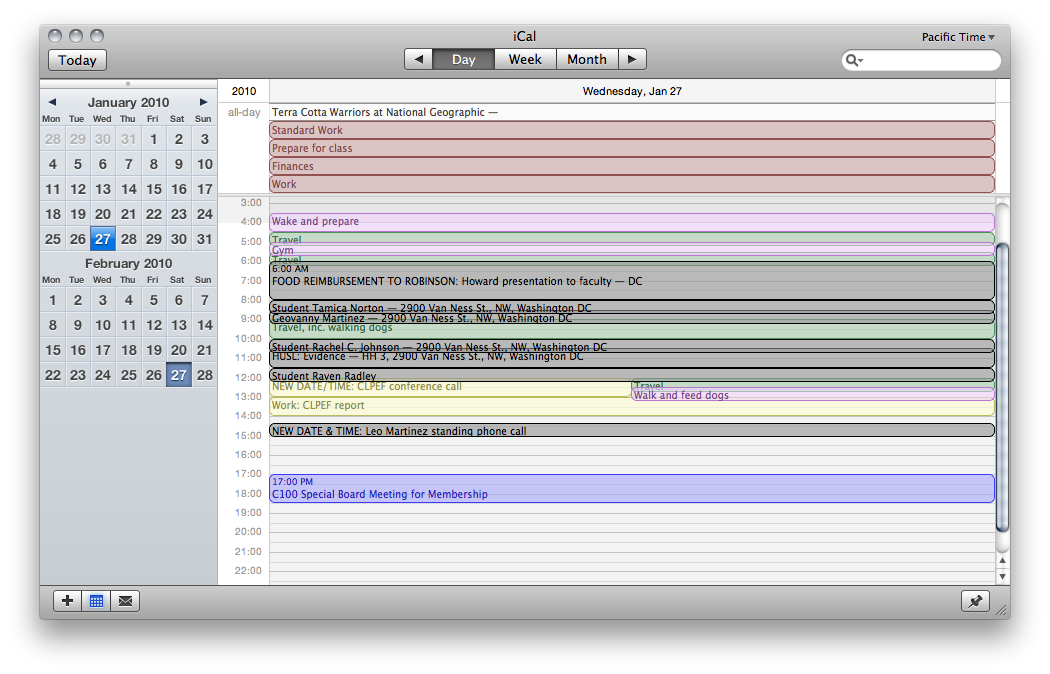
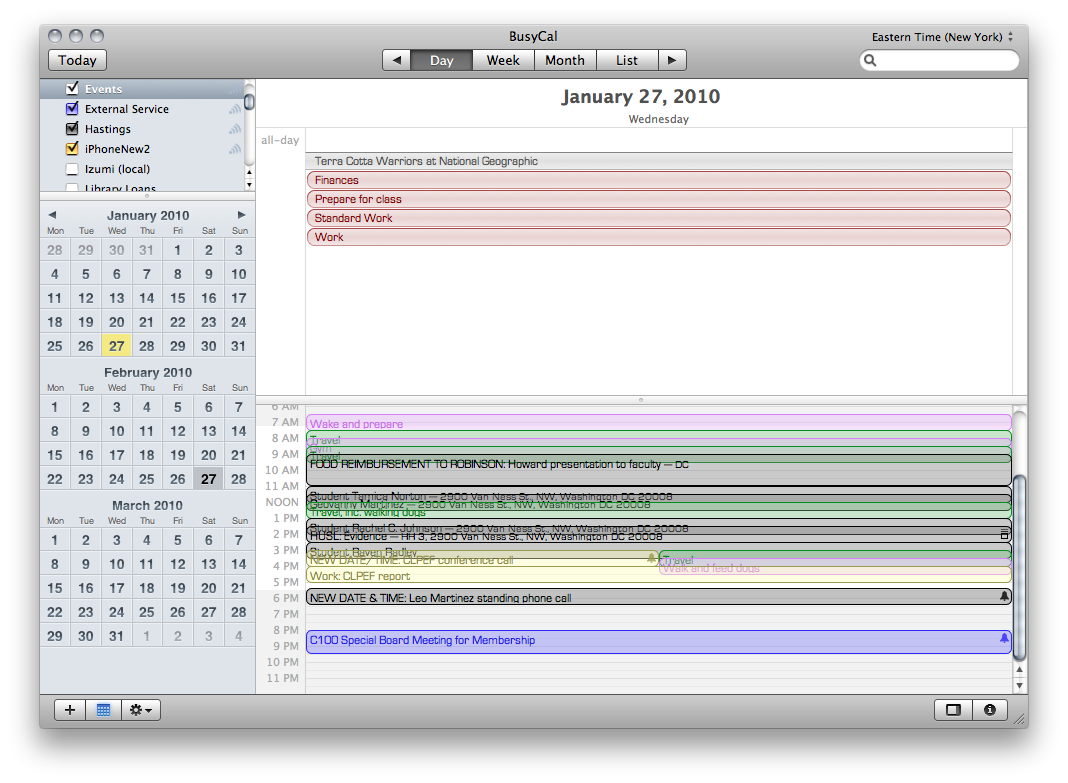
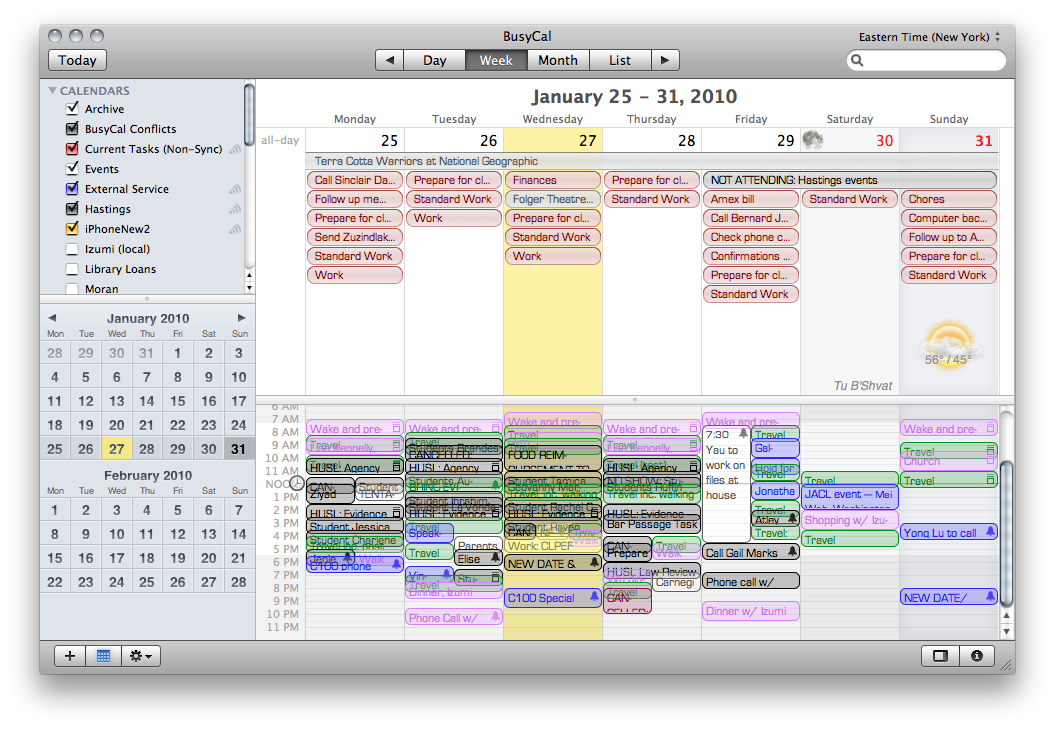
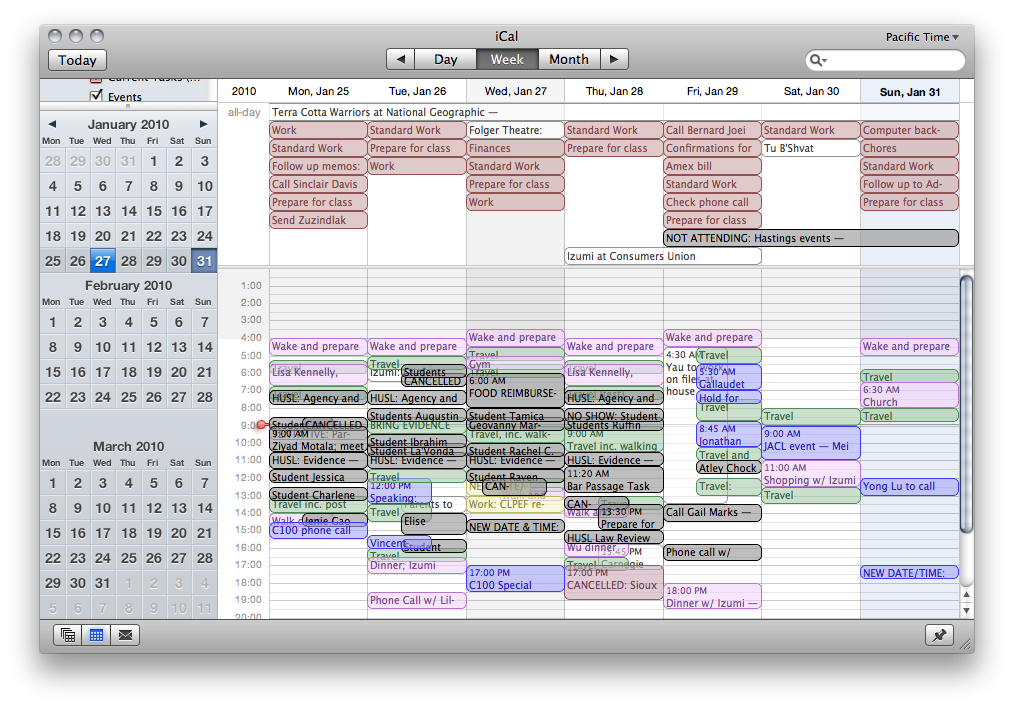
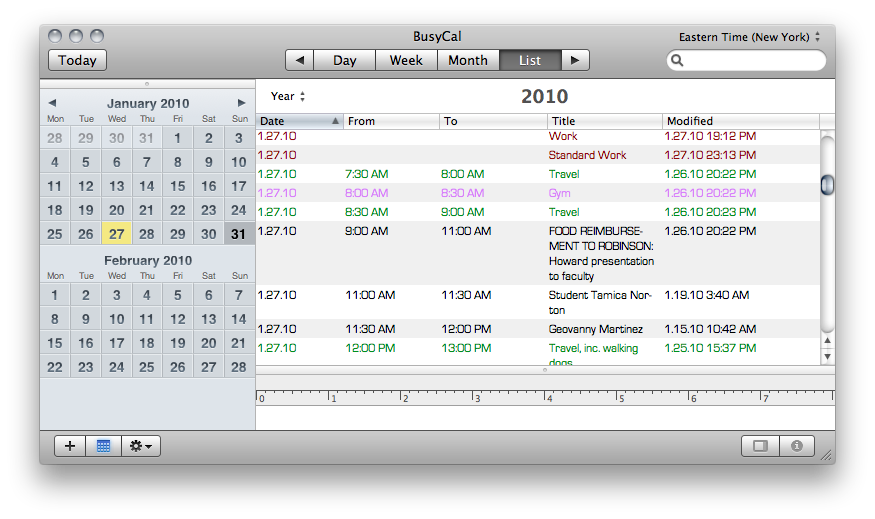
Reader Comments (4)
BusyCal's Tags is an interesting feature, one with a lot more potential. For my use, I would like to have a Cal app with something like Tags, that can sync with say a Filemaker or Bento database of Job Numbers and Job Names, to provide a context sensitive pick-list. My impression from some shallow-depth googling is that iCal can be made to do this, so I wouldn't be surprised if BusyCal could too.
By the reviews should show how the software displays on both the Mac and the iPhone.
Add A Comment